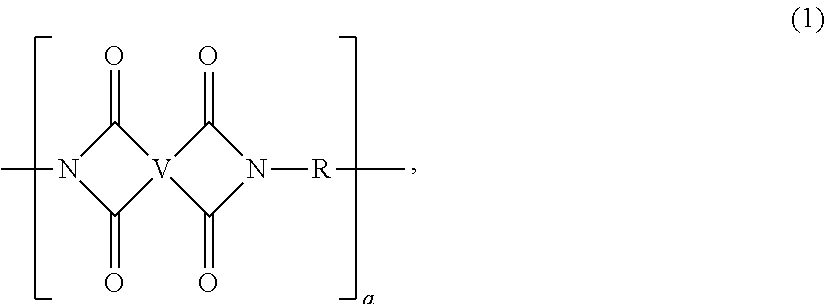Process of making dispersed polyetherimide micronized particles and process of coating and further forming of these particles products made therefrom
a technology of dispersed polyetherimide and micronized particles, which is applied in the direction of coatings, synthetic resin layered products, transportation and packaging, etc., can solve the problems of large capital investment, poor wetting of the polymer melt to the article, and voids on the surface of the coated article, etc., to achieve good interfacial adhesion, reduce volatile organic compound emission, and high performance
- Summary
- Abstract
- Description
- Claims
- Application Information
AI Technical Summary
Benefits of technology
Problems solved by technology
Method used
Image
Examples
example 1
[0079]The purpose of this example was to demonstrate a process, according to the first embodiment, of making polyetherimide or polyethersulfone coated articles with an aqueous dispersion of micronized polyetherimide or polyethersulfone polymers.
Description and Operation
[0080]An aqueous dispersion of micronized thermoplastic polymer with spherical morphology was produced by the following method: The thermoplastic polymer (Polyetherimide) was dissolved in an organic solvent like Methylene Chloride (between 25% and 1% concentration range) and emulsified with water (the water to organic ratio can be varied between 3:1 to 1:1 ratio w / w) using a surfactant like sodium dodecyl benzene sulfonate. Emulsification was done with high shear agitation (2500 rpm or above), which results in emulsion droplets of <45 microns. The organic solvent was removed from the solution either by heating or by purging with nitrogen. This results in aqueous dispersion of micronized thermoplastic polymer. In order...
example 2
[0082]The purpose of this example was to demonstrate a process, according to the second embodiment, of making water-dispersed high performance polymers that can form a continuous film below 100 degrees Celsius.
Description and Operation
[0083]An aqueous dispersion of micronized thermoplastic polymer with spherical morphology was produced by the following method: the thermoplastic polymer (Polyetherimide)) was dissolved in an organic solvent, specifically methylene chloride having a concentration in a range of from 25% and 1%. The dissolved thermoplastic polymer was then emulsified with water, using a surfactant like sodium dodecyl benzene sulfonate. The water to organic ratio can be varied between 3:1 to 1:1 ratio (w / w). Emulsification was done with high shear agitation at 2500 rpm or above, which resulted in stable emulsion formation. The organic solvent was removed from the solution by heating, spray drying, steam purging or by purging with a gas. This resulted in an aqueous dispers...
examples 3-1 , 3-2 , 3-3 , 3-4 , 3-5
Examples 3-1, 3-2, 3-3, 3-4, 3-5, and 3-6
[0089]The purpose of these examples was to demonstrate a process, according to the third embodiment, of producing surface cross-linked micronized particles and articles of polyetherimide.
Description and Operation
Production of Micronized Particles of PEI Through Emulsion Process
[0090]The techniques for making powders that were used in 3-1, 3-2, 3-3, and subsequently crosslinked are described in the following section. Polyetherimide aqueous dispersions were made using method described earlier in Example 2 and passed through a 75 micron sieve to remove any bigger particles. The aqueous dispersion of micronized polyetherimide was filtered through a 10-micron filter. In order to keep the residual surfactant content below 25 ppm, the wet cake is washed thrice with de-ionized water and filtered. The final wet cake was dried in vacuum oven at 180 degrees Celsius for eight hours to remove water and residual organic solvents.
[0091]The powders could hav...
PUM
| Property | Measurement | Unit |
|---|---|---|
| temperature | aaaaa | aaaaa |
| particle size | aaaaa | aaaaa |
| temperature | aaaaa | aaaaa |
Abstract
Description
Claims
Application Information
 Login to View More
Login to View More - R&D
- Intellectual Property
- Life Sciences
- Materials
- Tech Scout
- Unparalleled Data Quality
- Higher Quality Content
- 60% Fewer Hallucinations
Browse by: Latest US Patents, China's latest patents, Technical Efficacy Thesaurus, Application Domain, Technology Topic, Popular Technical Reports.
© 2025 PatSnap. All rights reserved.Legal|Privacy policy|Modern Slavery Act Transparency Statement|Sitemap|About US| Contact US: help@patsnap.com



